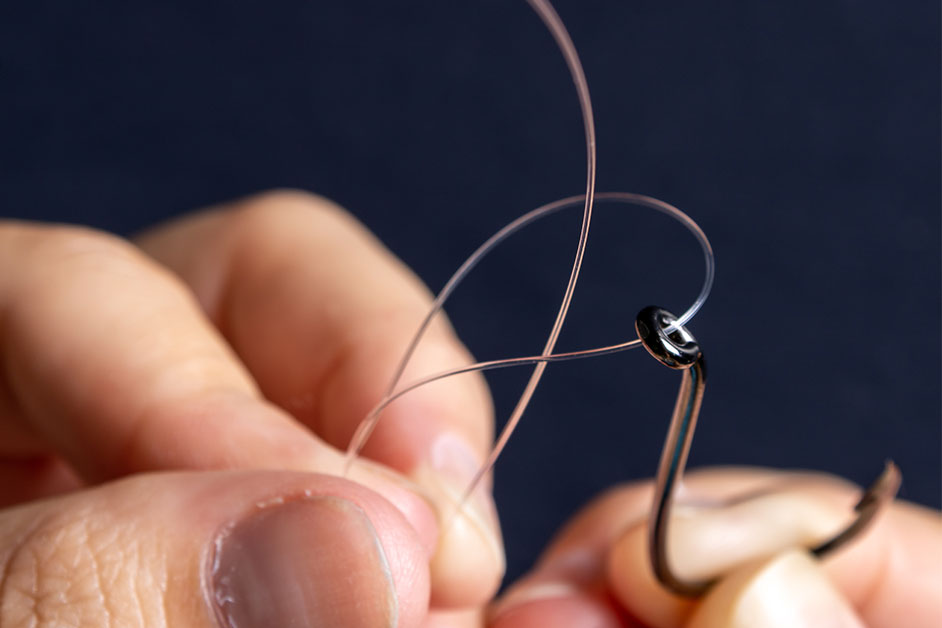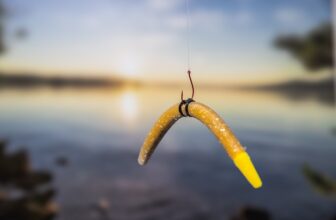
As a beginner fishing, there are a vast array of different skills that you need to get to grips with. One of the most important steps is learning to tie a few of the more basic knots. This is important to achieve before you head out on your first fishing trip. It’s far more difficult to learn them when you’re attempting to catch your first fish.
The easiest knots will also provide you with a lot of strength, usability, and durability. Some can even be used to catch certain types of fish like bass. So, let’s get started.
5 Best Fishing Knots
Arbor Knot
While this isn’t a particularly strong knot, the arbor knot is one of the easiest options to begin with. It will also provide you with a great building block to use for a typical fishing trip. A key reason for this is that it provides you with a versatile solution. You can use this knot to tie your fishing line to any type of reel by the spool. This includes a:
- Baitcasting reel
- Spinning reel
- Fly reel
The main purpose of this particular knot isn’t to hold a fish if it has taken the line down to the end of the spool. It’s probably not going to be strong enough for that. However, you can use this to ensure that you don’t lose a rod or reel if you have to pull the fish up by a line. It will save you from the issue of being spooled.
This occurs when a fish that is particularly strong takes off with the line you are using. An effective arbor knot will save you from losing an expensive line from your reel.
As mentioned, tying an arbor knot isn’t particularly difficult. You need to start by wrapping the line around the central post of a fishing reel which your line is attached to. This is known as the arbor. You should do this with the tag end of the line. You can then tie an overhand knot around the standing part by using the tag end.
Once you have done this, tie a second overhand knot about an inch from the first one. Finish up by pulling the standing part of the line so that you can slide the first knot down and jam the second against it. You can then trim the line so that it doesn’t fly around. This is easily one of the best fishing knots for beginners.
Clinch Knot
Another popular knot that could be ideal for you is the Clinch knot. The knot is easy to remember and simple, while also remaining incredibly durable. It’s versatile too and unless you need a knot for a highly specific purpose, you can probably work with the clinch knot.
To tie a clinch knot, you can get started by threading the tag end of the line directly through your fishing hook. You can go from above or below when you are completing this step.
Once you have done this, you can then wrap the tag part of the line straight around the taught line. You need to go back to the reel and complete this step up to six times. It depends on how sturdy you want the knot to be.
After you have completed this step, you can pass the end through the line which was created during the first step that we mentioned.
You might have heard of the “improved clinch knot.” If you want to create this, then you need to make sure that you feed the line through the loop that you create during the last step we mentioned. This is a way to make the knot stronger and far more durable.
To complete the clinch knot, you need to make sure that you are pulling it as tight as you can. It can also help if the line is a little moist as this will help ensure that the knot is tight. You can wet it a little before tying it to create this effect. Once you have tied the knot you just need to cut any excess line off. Ideally, you should cut it down to about an eighth of an inch.
Double Uni Knot
The Uni Knot can be used if you need to tie two lines together that have differing or similar levels of strength. It’s quite similar to the Blood Knot, but some people find it easier to achieve. This makes it another one of the best fishing knots for beginners. It can be used whether you’re fishing in saltwater or freshwater.
A key benefit of this knot is that the loop will slip closed when the fish comes in contact with the hook. As such, it can provide you with a key benefit that you might just need.
To tie a double uni knot you need to start by overlapping the lines that will be joined. You should then take the end of the line and make at least 3 wraps around the line as well as through the loop that you made. You can pull the tag end to tighten it.
You can repeat this process with the end of the line on the left. If you are using a braided line, you need to make sure that you double the number of wraps that you would usually have for this type of knot. This will give you two uni knots. If you want to form the double uni knot, you need to pull the lines in different directions. This will then slide the two knots together. Again it does help if the line is wet to provide the tightest hold.
Surgeon’s Knot
This is another one of the best fishing knots for beginners that you should be aware of. The best part is that if you are new to fishing, it’s relatively easy to learn.
It’s useful because it will allow you to join lines that are either unequal or equal in terms of diameter. There are other knots that can be used to do this such as this double uni knot. But these are more complex and as such you might struggle to complete one in difficult conditions such as colder temperatures.
This knot has other uses that make it important too. For instance, you can use it to join together lines that are made from different materials.
To tie this knot, you need to make sure that you overlap the two strands with as much as six inches but no less than four. Any section which isn’t attached to the line and your leader should be held firmly in your left hand.
Once you have done this, you need to form a loop within the strand which is overlapped. Then pinch the junction for the loop created between your fingers on your right hand.
Using the left hand, wrap the smaller piece and the tag end of the larger piece through the loop. You should make sure that you are doing this two times. If you need to tighten this knot, then you need to make sure that you are pulling all four ends. It’s important to make sure that they are all completely snug to guarantee the greatest level of strength.
If you tie this not the right way, then it will provide the complete line strength that you need. As such, you should make sure that you are testing it out regularly and perfecting it as much as you possibly can.
Pitzen Knot
This knot is a little more complicated than the other options we have discussed above. However, it is still one of the best fishing knots for beginners because of the level of strength that it provides. As such, you should make sure that you graduate to this knot once you have mastered some of the possibilities.
It’s particularly useful if you are going after a particularly large catch. Ultimately, this knot is going to hold against 95% of the line’s breaking strength.
If you are interested in trying a Pitzen knot, then you need to make sure that you are threading a line through the eye of the hook. You should then loop the tag line back underneath the standing line.
Next, you need to hook the line around your finger while using your other finger as a stop. Once you have done this, wrap the line back around at least four times.
You can then pass the tag through the loop that you have created with your finger. To tighten this knot, you need to slide it right down the eye for the hook. Instead of trying to pull the standing line, you should tighten it using your fingers.
We hope this helps you learn some of the best fishing knots for beginners. If you master these knots, you’ll already be well on your way to learning the skills you need for the perfect catch.






